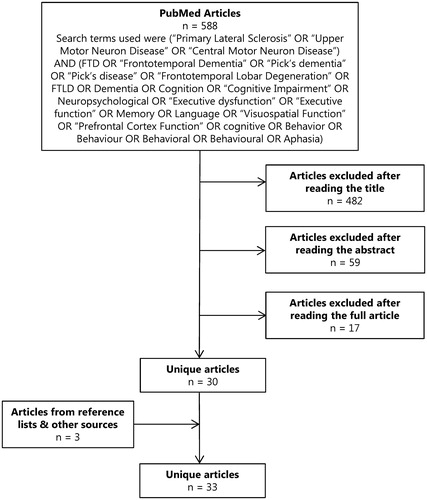Figures & data
Table 1. Clinical characteristics of PLS-FTD patients.
Table 2. Studies on PLS patients that interrogated cognition and/or behaviour.
Table 3. Pooled weighted effect sizes and heterogeneity statistics of cognitive domains.
Table 4. Overview of neuroimaging findings in PLS.
Table 5. Overview of neuropathological findings in PLS.


